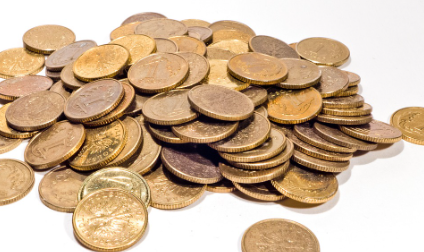$GLD $SI $SLV
#gold #silver #commodities #preciousmetals #markets #trading #investing #futures #economy #stocks #finance #profittaking
Gold and silver prices experienced significant declines during midday U.S. trading on Monday, driven primarily by routine corrective pullbacks and short-term profit-taking by futures traders. These metals had seen strong upward momentum in recent sessions, enticing traders to lock in gains and rebalance their positions. As the market stabilized from last week’s rallies, many analysts pointed to this downturn as a healthy retraction rather than the beginning of a broader downtrend. Gold, typically viewed as a safe-haven asset, is sensitive to fluctuations in trader sentiment, especially during periods of macroeconomic shifts, while silver’s industrial ties make it slightly more volatile.
Gold’s drop comes as the market closely assesses broader macroeconomic conditions, including recent U.S. economic data releases and signals from the Federal Reserve. Inflation figures and job reports have garnered substantial attention, creating speculation about the Fed’s interest rate policies. A potential pause or pivot in rate hikes could influence gold’s upside. However, hawkish signals or unexpectedly strong economic numbers could weigh further on prices. On Monday, the U.S. Dollar Index strengthened modestly, adding pressure to dollar-denominated commodities like gold and silver by driving up costs for foreign buyers. U.S. Treasury yields also showed slight stabilizations, which further dampened appeal for non-yielding assets such as gold.
Silver mirrored gold’s retreat, with prices falling in tandem as technical triggers compounded the downside pressure. Futures traders often shift positions aggressively when previous gains meet resistance levels; these movements are not uncommon following strong upward streaks. Silver, with its dual role as both an industrial and precious metal, faces additional challenges from fluctuating manufacturing data globally. Concerns about slowing demand in key industrial sectors, particularly in regions like China, have added to its short-term volatility. Analysts suggest that unless there is an unexpected surge in industrial demand or heightened geopolitical risks, silver prices may continue moving in a tighter range.
Despite Monday’s declines, the broader market sentiment remains cautious yet optimistic about gold and silver’s longer-term prospects. With persistent inflationary pressures, geopolitical uncertainty, and ongoing speculation about the Federal Reserve’s monetary policy, these metals could still find underlying support in the weeks ahead. Investors are likely to monitor upcoming economic indicators, such as CPI and retail sales data, to assess whether any adjustments to current investment strategies are warranted. In the near term, traders and investors alike must balance both technical price patterns and underlying macroeconomic signals to navigate the volatile nature of these markets.







Comments are closed.